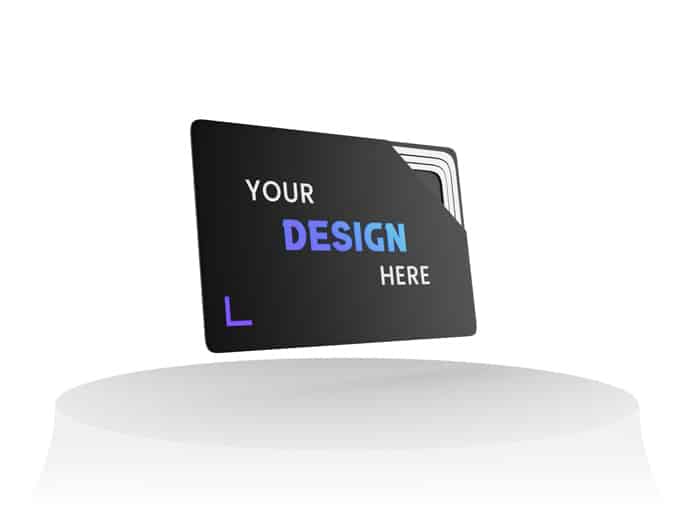
Why is the QR Code making a comeback in communication tools?

In this article, you’ll discover the history of the QR code and why it’s becoming increasingly popular.
The history of QR CODE
Also known as QR code, 2D code or Flash code, the QR code is made up of graphic signs that are interpreted by software to be perceived as numbers or letters. QR CODE stands for “Quick Réponse Code”.
The name is particularly apt, as anyone can see how quickly information is transmitted when a cashier scans it in a supermarket!
The QR code was created and developed in Japan by Masahiro Hara of DENSO-WAVE, a subsidiary of DENSO CORPORATION in 1994.
The main objective was to facilitate the tracking of spare parts in TOYOTA factories, from manufacture to packaging.
In 1999, DENSO-WAVE released the QR CODE under a 2.
The QR code was then widely adopted and, in June 2000, became part of the ISO 18004 standard.
The use of QR CODE is very familiar in Japan.
In 2010, a study showed that 90% of Japanese housewives were already scanning a QR CODE, whereas in France, it was only just beginning to be noticed!
QR CODE features
The QR CODE is different from conventional barcodes in that it is two-dimensional.
In fact, the QR CODE is not read horizontally in a single direction like other barcodes, but both horizontally and vertically.
This means it can store much more information.
Generally speaking, it consists of a square with small black modules (pixels) aligned on a white background.
QR codes come in a range of sizes, from 21 to 177 modules, depending on the number of characters inserted.
Another feature of a QR code is error correction.
The patterns contained in this 2D barcode can incorporate a greater or lesser degree of redundancy (7, 15, 25 or 30%). This redundancy ensures that the QR code is always usable, even if a part is missing or illegible.
As technology evolved, QR codes contained more and more information.
The original QR CODE was 21×21 pixels and contained just 4 characters of data.
The latest version is 177 pixels on each side and contains up to 1852 characters: enough to display a few pages of information.
Compared with traditional barcodes, QR codes have the advantage of being able to store 100 times more information.
Using QR CODE
The use of QR codes has become more and more widespread since the technical capabilities of our smartphones have increased, as in the case of the COVID-19 health crisis. In recent years, with a simple phone, webcam or tablet, a QR code can be scanned and used very quickly.
Furthermore, with the Coronavirus health crisis in 2019 and the introduction of a specific monitoring application, the use of QR codes has developed at great speed.
In addition, to pay a bill in a restaurant or store, for example, you can scan a code to pay directly via your phone.
How can QR codes be used in corporate communications?
Digital technology has become one of the most effective means used by companies for advertising and marketing purposes.
Indeed, these days, everything is digitalized, and purchases, sales and even payments can be made via a smartphone.
Thanks to QR CODE, the seller can transmit more information about a product, even during the sales process.
The QR-Code can also be used to transmit data that may be useful in helping a buyer to make a decision: with this technology, all the buyer has to do is scan the digital code with his or her smartphone or tablet to access relevant information.
What’s more, the use of QR CODE can prove useful for a company, especially when it comes to promoting an object or service.
In this case, the salesperson provokes curiosity in the customer/prospect and invites them to scan the code to obtain further information related to the product or service.
Of course, it’s also in a company’s interest to print a QR code on its business cards, so that important promotional information can be disseminated directly.
That’s what we’re going to look at now.
Why use a QR CODE on a business card?
QR codes can also be used on business cards.
Let’s start by defining a business card as a small piece of cardboard on which a person’s or company’s contact details are written.
If the business card is of great importance to a professional, adding a QR CODE to a business card will be even more relevant.
Scanning a QR code on a printed or digital business card can be a direct shortcut to specific information, a file or even a resume…
Scanning a QR CODE can, for example, take a person to a Facebook, Twitter or Linkedin account. In this way, customers can keep abreast of company developments and events.
A Qr-code on a business card can also be used to directly initiate a call when scanned.
Practical, isn’t it?
How does it work to create a QR CODE printed on a business card?
Once you’ve designed your business card, or had one made for you, creating a QR CODE is as simple as that!
1ᵉ step: choose the purpose
Ask yourself what you need to convey through the QR CODE.
Is it directions to your company or office location?
Or will the QR code send your customers to your website or business page on social networks?
Or will it enable your customers to contact you directly by phone?
It’s up to you to determine what you need to integrate into your QR CODE.
2ᵉ step: choose a code generator
Once you’ve identified your need, you need to look for a QR-Code generator. There are several easy-to-use applications, whether you have an iPhone, an Apple computer, an Android smartphone or even a PC.
With this system, you’ll get a simple code.
However, we recommend that you call on the services of a specialized professional who will be able to explain in detail all the advantages of an optimized QR code.
3ᵉ step: choose the type of code
You now need to select the type of code you want to create.
There are essentially two types of code: static QR codes and dynamic QR codes.
Static QR codes are used to store permanent information. This means that if you choose to use this type of coding, all the information you enter cannot be modified once the code has been generated.
Dynamic QR codes, on the other hand, are used to store information that can be modified over time. If you choose to use dynamic QR codes, you’ll be able to directly access and modify your information at any time.
4ᵉ step: enter your information on the code generator
Having chosen the type of code you need, now think about entering your information on the generator and personalizing your QR code.
If you use a service provider, they will of course take care of this operation.
Be sure to check that the information is correct: once the QR code has been generated, it may be difficult to return to it.
5ᵉ step: download and send the code to your printer
This step marks the end of QR CODE creation.
All you have to do is download it and send it to your printer.
You’ll need to download or request the QR CODE in several formats, and above all in high definition to facilitate printing.
Recommended formats are SVG, EPS or PDF.
If you’ve opted for a digital business card, the service provider will not only integrate the QR code, but also check the link to take the user to the right digital resource.
Written by Camille BODET
The digital business card is a real ally for professionals wishing to promote their business effectively and instantly. In the...Lire la suite
VKARD is an innovative and effective solution to help all professionals stand out from the crowd and reinforce their brand...Lire la suite
If you prepare properly for a job interview, you'll have every chance of winning over the recruiter and getting the...Lire la suite
LinkedIn is a world-renowned business platform, and for good reason! Thanks to its many networking options, LinkedIn is the tool...Lire la suite
Find out how Leexi AI optimizes the management of videoconferences and business calls, saving time and improving efficiency.
In the professional sphere, it's vital to know how to convey certain strong values in order to stand out and...Lire la suite
Mastering the art of conversation is a real asset! By mastering the subtle art of conversation, you'll be able to...Lire la suite
Are you taking part in a trade event and want to do everything you can to make a good impression?...Lire la suite
CRM (Customer Relationship Management) represents a genuine corporate strategy for managing business contacts. This popular tool for professionals is in...Lire la suite
At a time when the professional world is in a perpetual state of competition, we might wonder what place altruism,...Lire la suite















